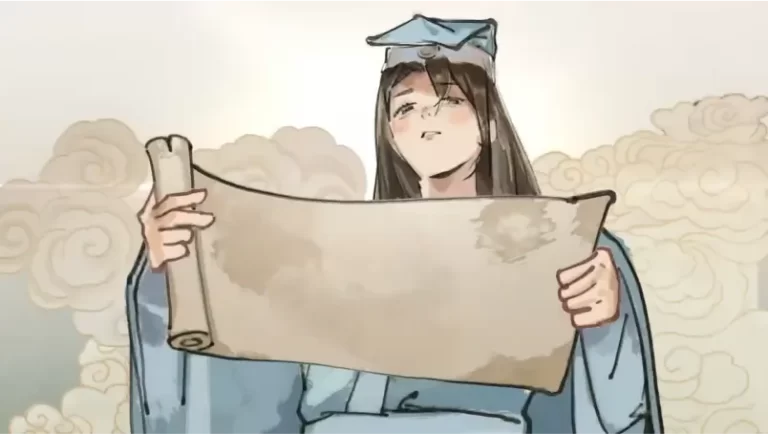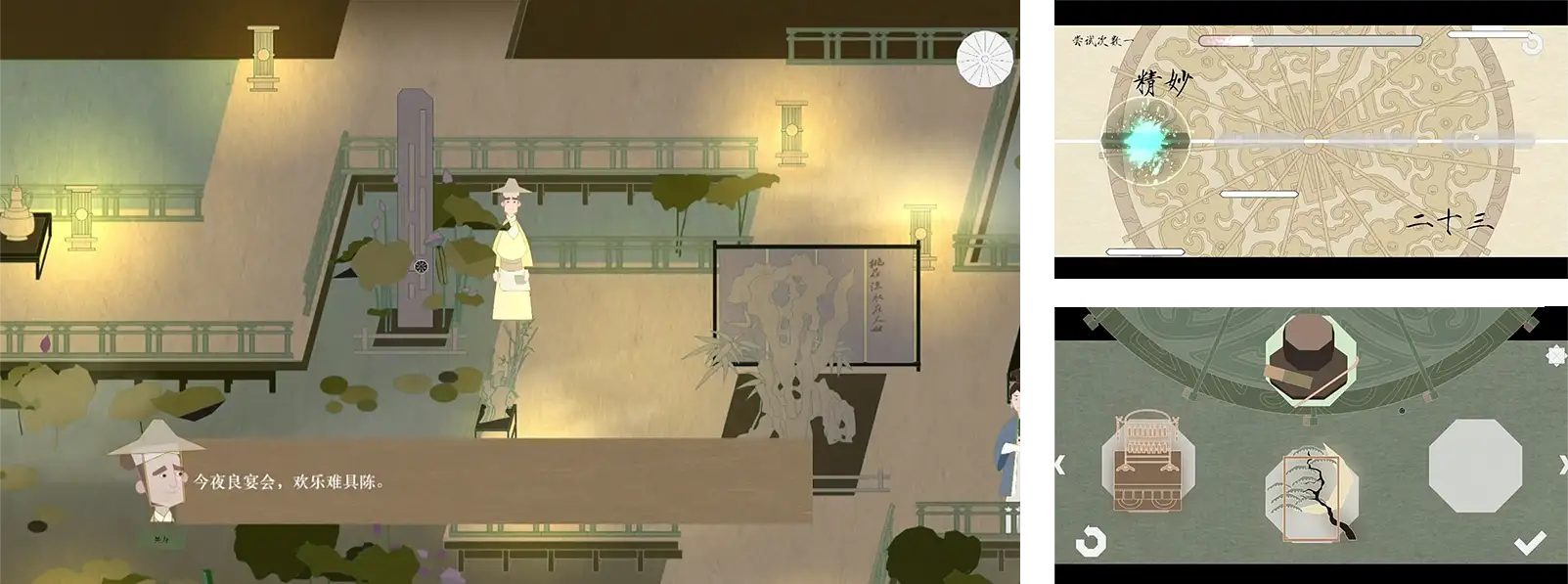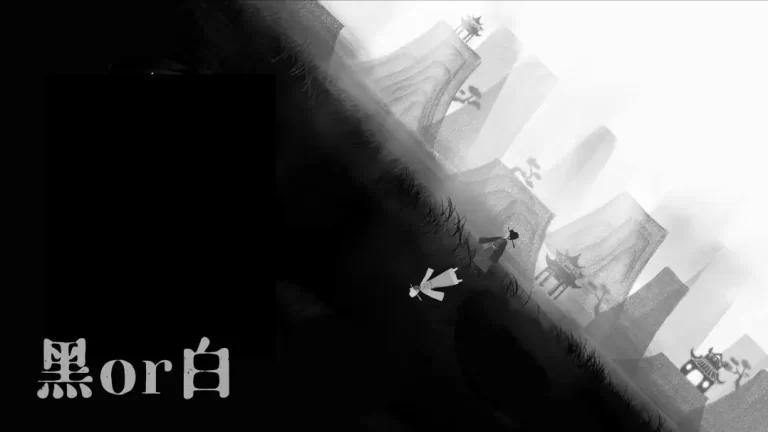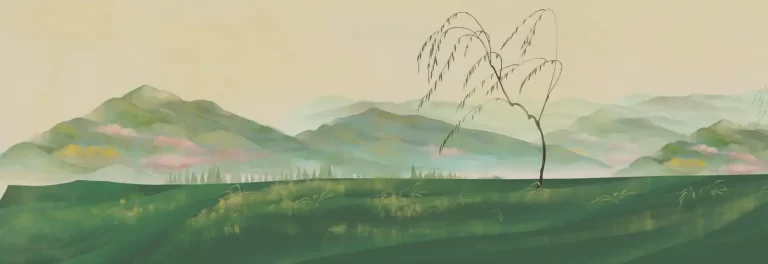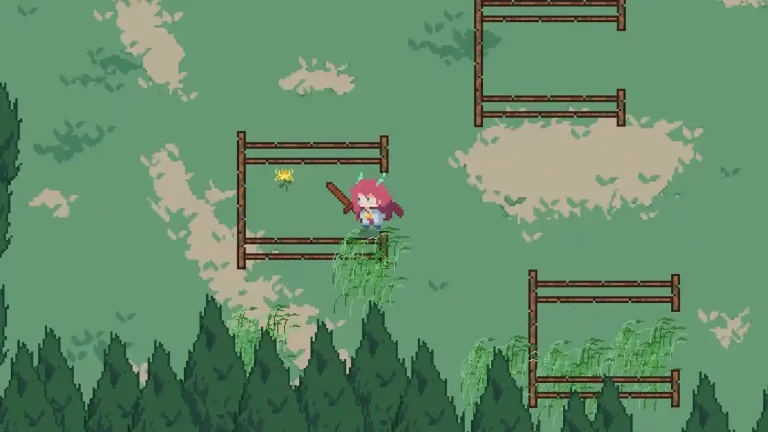
Course Name
Design Tech. 3: Game Design & Dev.
Students
Juniors, Media & Comm. Design
Partner
Social Value Research Institute of Tencent Interactive Entertainment
Course Leader
Aaron Leo (D&I, Tongji Univ.)
Mentors from the Game Industry
Miao Li, Bingqing Zhang & Qing Liu
(Social Value Research Institute of Tencent Interactive Entertainment)

Course Name
Design Tech. 3: Game Design & Dev.
Students
Juniors, Media & Comm. Design
Partner
Social Value Research Institute of Tencent Interactive Entertainment
Course Leader
Aaron Leo (D&I, Tongji Univ.)
Mentors from the Game Industry
Miao Li, Bingqing Zhang & Qing Liu
(Social Value Research Institute of Tencent Interactive Entertainment)

Course Name: Design Tech. 3: Game Design & Dev.
Students: Juniors, Media & Comm. Design
Partner: Social Value Research Institute of Tencent Interactive Entertainment
Course Leader: Aaron Leo (D&I, Tongji Univ.)
Mentors from the Game Industry: Miao Li, Bingqing Zhang & Qing Liu
(Social Value Research Institute of Tencent Interactive Entertainment)

The course “Design Technology 3: Digital Game Design and Development,” taught by Professor Aaron Leo, is a mandatory professional course for third-year students in the Media and Communication Design program at the College of Design and Innovation, Tongji University. It has been recognized as a top-tier undergraduate course in Shanghai. The course covers various aspects including the history of game development, game design theories, and game development technologies. By the end of the semester, students are required to work in teams of about five to design and develop an original independent game.
This year’s game design and development course was conducted in collaboration with Social Value Research Institute of Tencent Interactive Entertainment. Students were tasked with finding inspiration, conceptualizing ideas, designing plans, and ultimately creating game prototypes based on the theme “Modern Interpretation of Ancient Poetry,” proposed by Tencent. Throughout the course, industry experts Miao Li, Bingqing Zhang, and Qing Liu from Social Value Research Institute of Tencent Interactive Entertainment shared their industry experiences and provided one-on-one professional guidance to the students. With the collective efforts of all faculty and students, ten game projects with both high artistic and entertainment value were successfully completed. Hope you enjoy these remarkable works.

01. PengLai
Creators / Yueran Gou, Fengyu Wang, Hongyu Yue, Jizheng Lin, Xinyue Zhang
Overview
∷∷∷∷∷∷∷∷∷∷
”Penglai” is a 3D ancient-style puzzle game inspired by the ancient Chinese mythological system of Penglai. The game is set on the immortal island of Penglai, located east of the Bohai Sea, where the buildings overlap, and clouds and mist swirl, the residence of the Eight Immortals of Penglai. Players take on the role of a young Taoist priest who, after accidentally obtaining an ancient book sealing the entrance to the fairyland, embarks on a journey to visit the Eight Immortals of Penglai and explore the Penglai fairyland.

Gameplay
∷∷∷∷∷∷∷∷∷∷
The game adopts a sandbox game design approach, requiring players to think, slide, or merge buildings in the scene to create pathways, helping the protagonist reach their destination and complete scene explorations.
In terms of interaction design, the game uses a 45-degree third-person overhead view. Players move the character by clicking on road tiles with the mouse, rotate the view using the mouse wheel, and move pavilions by clicking the compass direction keys. The game simplifies operations and enhances the gaming experience through features like auto-pathfinding and fixed-angle rotation.
”Penglai” draws inspiration from ancient Chinese architecture, designing four types of structures—pavilions, corridors, towers, and archways—totaling dozens of individual buildings, each with unique features and behavior mechanisms. The pavilion, symbolizing a resting place by the water, can slide freely and stop to merge when it touches another building. The corridor, symbolizing connection, is a horizontal structure spanning water that connects two or more units, forming walkable paths for the player. The tower, representing elevated structures, is formed by merging two or more pavilions, increasing height and allowing vertical movement within floors. Archways, serving as checkpoints, mark the start and end points of levels, clarifying the conditions for completing a level.

Videos
Trailer
Concept Explanation
02. Mountain and Ocean
Creators / Yutong Fu, Yixin Wen, Xueyi Du, Ruin Deng, Lei Yang, Cheng Xu
Overview
∷∷∷∷∷∷∷∷∷∷
”Shanhai” is a light puzzle-oriented serious game aimed at promoting traditional Chinese culture, with its story revolving around the geography and natural resources described in the ancient text Classic of Mountains and Seas (Shan Hai Jing).
The Classic of Mountains and Seas may seem fantastical and irrational, but it is a reflection of early Chinese civilization’s thought processes, serving as a grand cultural overview of the ancient world. The game’s protagonist is a small spirit born from the Classic of Mountains and Seas after thousands of years. This spirit possesses all the knowledge contained within the text and was meant to roam freely between mountains and seas. However, due to people’s growing neglect of the Classic of Mountains and Seas in the real world, disasters have struck the book’s world, causing the mountains and seas to fall into ruin, and the little spirit to lose its memory. The game begins with the amnesiac spirit waking up, and players will take on the role of the spirit, entering the chaotic world of mountains and seas to restore order.

Gameplay
∷∷∷∷∷∷∷∷∷∷
The game levels are designed based on the spatial structure of the Classic of Mountains and Seas (Shan Hai Jing), focusing on the sections “Classic of the Southern Mountains,” “Classic of the Western Mountains,” “Classic of the Northern Mountains,” “Classic of the Eastern Mountains,” and “Classic of the Central Mountains.” Each level features a Shan Hai puzzle that players need to complete by collecting fragments while exploring the world and restoring the puzzle to its original state.
Each level has a different map but utilizes the same interaction methods. At the beginning of the game, players will learn basic operations such as switching perspectives and moving the map through guided tutorials, which will enable them to solve subsequent puzzles. The game’s main storyline involves helping an injured little phoenix find its mother, serving as the primary motivation for players to explore the map. Players interact with the flora and fauna in the terrain, learning relevant knowledge from the Classic of Mountains and Seas and receiving clues to solve the puzzles.

Videos
Trailer
Concept Explanation
03. Prosody
Creators / Yujian Li, Yuanyi Lu, Yanrong Tian, Dingxin Hu, Yiou Wang
Overview
∷∷∷∷∷∷∷∷∷∷
”Prosody” is a narrative experience game that explores and appreciates the beauty of music within poetry. The game is set against the literary backdrop of Dreams of Splendor of the Eastern Capital (Dongjing Meng Hua Lu) and tells the story of Wu Wei, a young musician in a bustling tavern in Bianjing during the Northern Song Dynasty, who uses music to heal those who have lost their memories.

Gameplay
∷∷∷∷∷∷∷∷∷∷
The game requires players to open rhythm game sub-games one by one through object-finding in the scenes. These are real-time falling-note rhythm games where notes appear from top to bottom, triggered by the player’s taps in coordination with the rotation of an umbrella. Thus, the music is recreated by the player. Each time a rhythm game sub-game is completed, a new scene is unlocked, and the player collects a music fragment to add to their inventory. After collecting all the fragments, the player must perform a final piece. By dragging the correct fragments into the performance sequence, these pieces of music will combine and merge together. Only by completing the correct combination can the player pass the level.

Videos
Trailer
Concept Explanation
04. Philosophical Runner
Creators / Qianer Yang, Tianyi Jiang, Xinyi Huo, Jiayun He, Haoran Li
Overview
∷∷∷∷∷∷∷∷∷∷
Philosophical Runner is a 2D platformer that combines traditional Chinese philosophy with dialectical thinking. The name of the game comes from a saying in Lao Tzu’s DaoDeJing, “Knowing rules and truth, keeping faith and integrity. This can be a model for the world”. It combines the beauty of Chinese characters and the dialectical way of coping with life. The player plays as an ordinary ancient people, travelling among Chinese characters, overcoming the obstacles and making life choices.

Gameplay
∷∷∷∷∷∷∷∷∷∷
The game’s objective is to weigh the pros and cons when facing difficulties and choose the appropriate path to reach the end. There are four levels designed to correspond to the protagonist’s key life choices. Currently, the “Court and Jianghu” level map has been completed, inspired by the ancient poems representing Jianghu (“Leisurely I see the South Mountain”) and the court (“Unyielding ambition to reach the clouds”).
The game scenes range from leisurely living to tedious official duties, to the treacherous bureaucracy and the desolate Jianghu, offering players a rich emotional experience. Players will face difficult choices: whether to accept or reject illicit wealth; whether to fight against bureaucratic intrigue or keep a low profile. These choices affect the subsequent difficulty and lead to three different endings.
In the chaotic officialdom, will the protagonist be blinded by money and power, or uphold the original intention of “establishing a livelihood for the people”? Or will they see the corruption in the court and choose to retire to the mountains and live a secluded life? There is no definitive answer to right or wrong, and each choice comes with different challenges. Players will experience the difficulty of weighing choices, leading to profound reflections on the dialectical way of dealing with the world.

Videos
Trailer
Concept Explanation
05. Moonlight Seeker
Creators / Qianru Wen, Ouqi Zhang, Shuyan Ding, Jingwen Xu, Lvyun Shi, Simian Zhou
Overview
∷∷∷∷∷∷∷∷∷∷
Moonlight Seeker is a 2D platformer + puzzle game inspired by Chinese poems about the moon. There are many master pieces about the moon among numerous classical Chinese poetries. The moon often conveys different emotions and portrays different images. The story of the game begins as modern people are addicted to the screens in their hands, while looking up at the bright moon has become a fading memory, and thus the moon gradually becomes dim. On the other side of the world, a moonlight fairy who hopes to return the poetic moonlight to the earth gently picks up the moon and embarks on a fantastic journey to the mortal world.

Gameplay
∷∷∷∷∷∷∷∷∷∷
The main gameplay of the game involves using the moon’s abilities to traverse obstacles, collecting all poetic meteors along the way, and reaching the endpoint. Influenced by waterways, obstacles, and celestial dogs, players cannot simply pass through levels but must think about how to overcome these barriers. By manipulating the moon’s phases and its brightness, players pick up or put down the moon in suitable positions to complete challenges.
During the final level completion, players must not separate from the moon to rescue it and help it return to the night sky of reality. This design allows players to experience the joy of manipulating lunar phases and overcoming challenges, while also emphasizing themes of redemption and return.

Videos
Trailer
Concept Explanation
06. King of Couplet
Creators / Qiaoqiao Jin, Xueling Mou, Zhiying Ren, Qiao Yang, Yanling Xu
Overview
∷∷∷∷∷∷∷∷∷∷
King of Couplet is a story-oriented exploration game in which the player takes on the role of an unnamed fairy working in the Heavenly Court, who has been stranded in the mortal world due to an accident. He can only regain his power and return to the Heavenly Court by continuously join couplet battles. He also needs to find out the truth behind the whole incident in the process. The core gameplay lies in scenes exploration, inspirational vocabulary collection, and competing with NPCs in the form of couplet battles.

Gameplay
∷∷∷∷∷∷∷∷∷∷
The core gameplay of the game involves exploring scenes and collecting inspiration vocabulary for poetry. During poetry duels with NPCs, players must adhere to the rules of poetic composition to craft brilliant lines and achieve victory, thereby advancing the storyline.
During the exploration phase, players can gather necessary “imagery vocabulary” for the poetry by examining scene props, conversing with NPCs, and reading books. In the poetry duels, each imagery vocabulary item is quantified based on its tone pattern and grammatical property. Players need to assess these attributes during battles and select the most suitable vocabulary item to complete the poetic line, effectively dealing “strikes” to opponents.

Videos
Trailer
Concept Explanation
07. Sleepless Night
Creators / Huaer Tu, Yiran Xu, Zhaoyang Zhong, Shimiao Su, Hongshan Lu
Overview
∷∷∷∷∷∷∷∷∷∷
”Sleepless Night” is a text-based narrative game adapted from the background of visiting Chang’an Temple at night. Its inspiration comes from the familiar text “A Record of Visiting Chang’an Temple at Night” — “Huaimin and I were not asleep, and walked together in the courtyard.” Our story unfolds from this point.
Once again, Zhang Huaimin is disturbed before sleep by Su Shi, who knocks on his door and persuades him to drink. Exhausted but unable to refuse, Zhang can only reluctantly pray to the “Sleep God” to prevent Su Shi from disrupting his sleep again. The Sleep God hears his wish, but unexpectedly traps Zhang Huaimin in a time loop.

Gameplay
∷∷∷∷∷∷∷∷∷∷
The game is built upon the poetry and writings of Su Shi and Zhang Huaimin around the sixth year of the Yuanfeng era. It outlines the daily routines and behavioral logic of the poets, focusing on map exploration and interactive decryption. Players must explore the map, find key items, and help Zhang Huaimin break free from the time loop. Different player choices will lead to different endings.

Videos
Trailer
Concept Explanation
08. First Frost
Creators / Yilin Shen, Ruoyan Hao, Ning Zhong, Ziqin Zhou, Yu Fu, Haojuan Bao
Overview
∷∷∷∷∷∷∷∷∷∷
First Frost is a narrative puzzle game based on the classic Chinese novel LiaozhaiZhiyi, referring to the ghost stories and characters depicted in it. The game storyline unfolds from the perspective of Lord Fox, a judge of the hell. The bizarre phenomenon of the disappearance of all Chai’s family members in the book of life and death keep the players in suspense. The only way to put Chai’s family back on the right track of the cycle of life and death is to go back in time to resolve the grievances and stop the murder from happening.

Gameplay
∷∷∷∷∷∷∷∷∷∷
The game focuses on resolving grudges as its main objective. During the process of resolving grudges, the Fox Elder can utilize time reversal and item duplication skills. Each instance of time reversal consumes grudge points, so players must carefully observe clues at the crime scene to correctly trace the source of the grudge.
If a player fails in their time reversal attempts or depletes their grudge points, they must then visit the Yin-Yang Shop to find the shopkeeper, Lord Liu Zhe, and navigate through a maze while evading pursuit from the Four Great Divine Beasts. They need to collect all the ghost fires and merge them into a point of grudge. Successful time reversals allow the Fox Elder to return to the crucial moment when the grudge was formed, witness the circumstances that led to it, and then change the course of events by duplicating items in the scene, thereby preventing the grudge from forming.

Videos
Trailer
Concept Explanation
09. Shelter for Heartbroken Poets
Creators / Shuyi Ye, Yufei Zhang, Yajie Liang, Yizhuo Wang, Jingyi Feng
Overview
∷∷∷∷∷∷∷∷∷∷
”The Broken Poet’s Sanctuary” is a tactical RPG game that blends text, storyline, and combat elements. You play as a university student who loves classical poetry, using the power of fragments of poetry scrolls to navigate through the ethereal halls of the Temple of Wenquxing, exploring the truth behind the legend of Wenquxing.

Gameplay
∷∷∷∷∷∷∷∷∷∷
The game unfolds its main battles within a 5×5 attic. Players have three action points per turn, allowing them to place their poetry scrolls on the chessboard or choose actions such as “attack,” “heal,” or “move.” Strategically using the power of poetry scrolls is essential for defeating enemies. After the player’s turn ends, enemies respond based on the battle situation during their turn.
Players will control the protagonist to defeat Li Bai possessed by the evil Wenquxing, expelling Wenquxing and freeing the trapped poets within the attic. Through this journey, the protagonist no longer focuses solely on outward talent but understands that personal experiences and life are the true sources of growth.

Videos
Trailer
Concept Explanation
10. Poetry World Adventure
Creators/b> / Wenjie Yu, Sifan Sun, Hongyang Zhongzhao, Yunhao Wu
Overview
∷∷∷∷∷∷∷∷∷∷
Poetry World Adventure is a pixel art RPG that combines map interaction, story-based puzzles and bullet hell battles, with an overall relaxing and enjoyable style that is cool and cute at the same time. The story takes place in the poetry world, where ancient poetries and magic are highly connected, and players need to control the main character, Long Long, to start an adventure in the Poetry World.

Gameplay
∷∷∷∷∷∷∷∷∷∷
The gameplay mainly includes map interaction, storyline puzzles, and bullet-hell battles:
① Map Interaction: Moving, dialogues, and slashing are the core loops. Most objects on the map can be interacted with by slashing.
② Storyline Puzzles: There are two types. First type – Obtaining clues through items, exploring the map to find answers.
Second type – Solving puzzle mini-games in pop-up windows.
③ Bullet-Hell Battles: When entering combat, players enter a new scene where they must dodge various forms of dense bullet rain and attack enemies until victory.
The game follows a linear progression, consisting of larger sandbox-style maps and simpler transitional maps. The sandbox maps are maze-like to enhance replayability.

Videos
Trailer
Concept Explanation

”In the moon’s setting and the crow’s caw, frost fills the sky, the river maples and fishing lights reflect the sorrowful sleep.”
”Clouds long for the rainbow dress, flowers long for the beauty, the spring breeze brushes the railing, and the dewdrops glow.”
”In the small rain on the heavenly street, grass colors look green from afar, but closer, there seems to be none.”
(literal translation of Chinese poems above)
The world of ancient poetry is an infinite treasure trove. Each poem is like a delicate ink painting, inviting one to stop and gaze, and each ancient prose is like a pot of rich, aged wine, evoking deep reflections. These writings, which encapsulate the wisdom and emotions of ancient sages, not only enhance our personal taste and cultivation but also provide rich and fertile spiritual soil for various new forms of artistic creation. This semester, the students’ game creations, inspired by traditional Chinese poetry and prose, were a meaningful attempt. Through this process, students not only read China’s classic literary works more thoroughly and extensively but also thought hard about how to use modern technology and forms to present them as games that appeal to contemporary young people and are more suitable for mass dissemination, resulting in satisfactory final products.
Heaven rewards diligence. Congratulations to the students for learning knowledge, developing skills, and completing outstanding works through a semester of hard work. We also look forward to seeing everyone draw more abundant creative inspiration from traditional Chinese culture in the future and present it to the world in more innovative and exciting forms!




